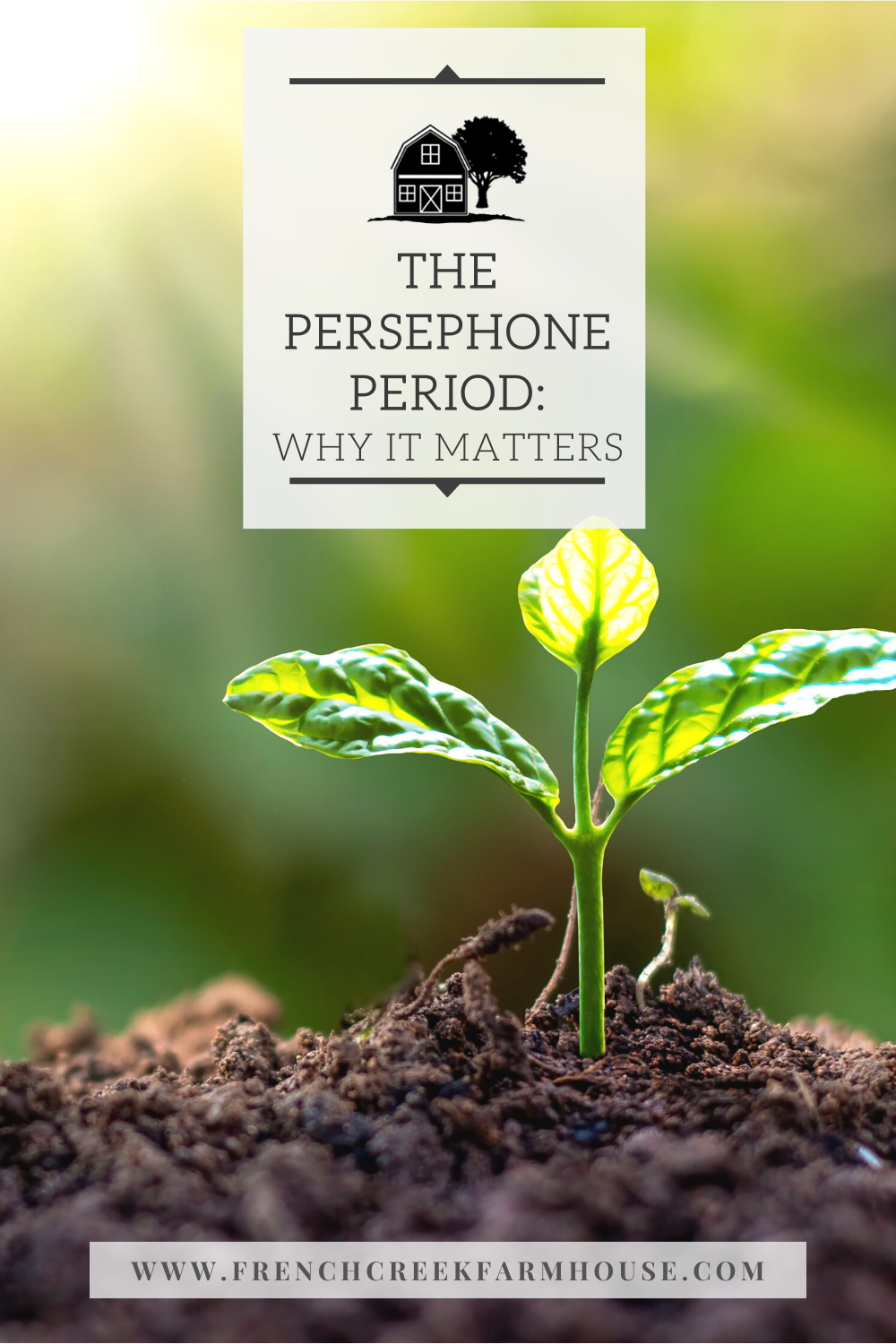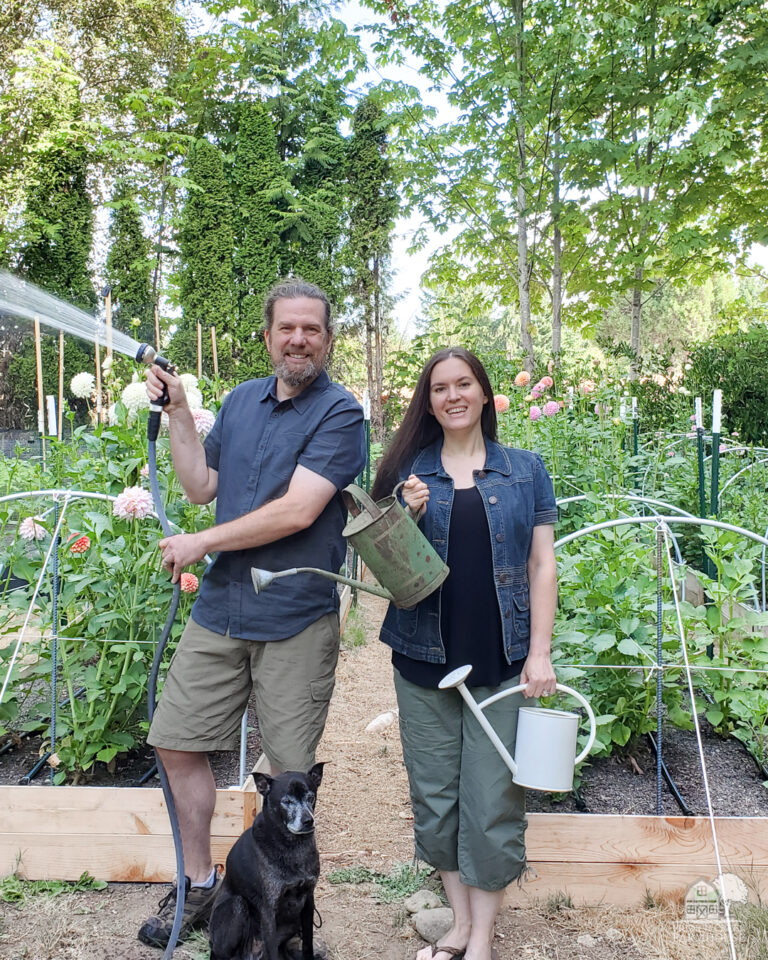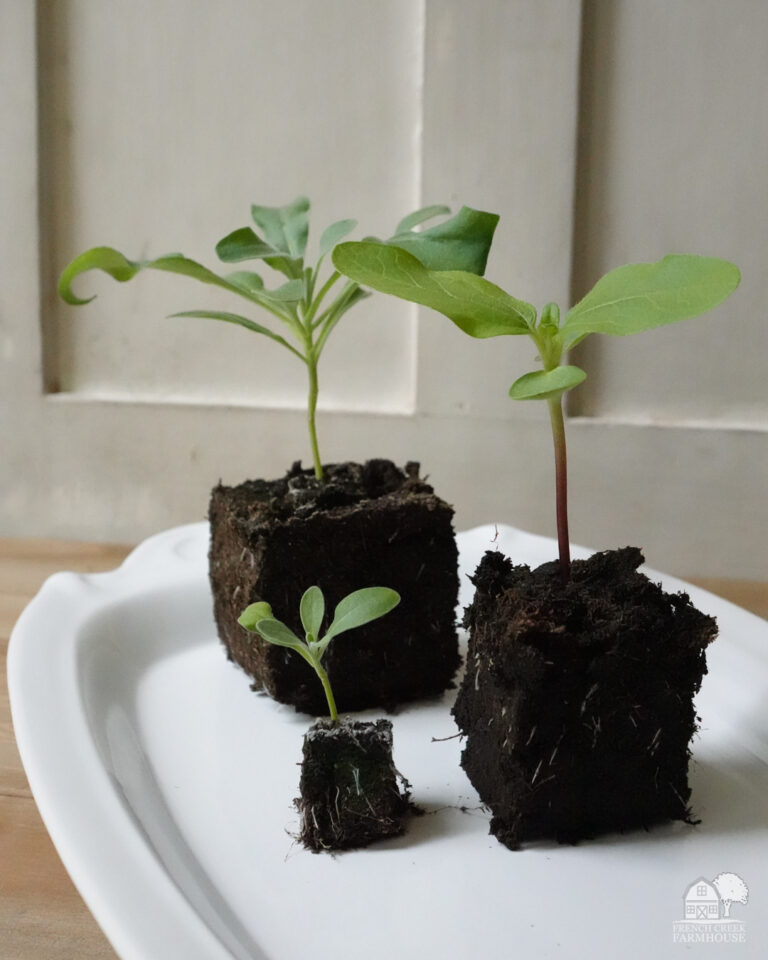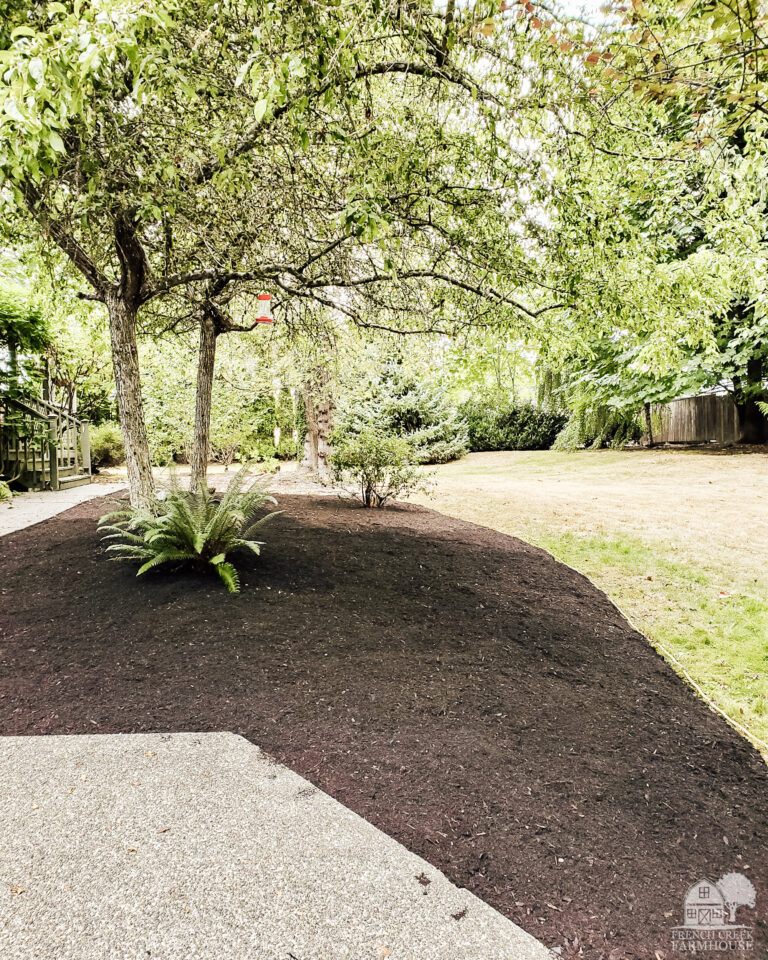The Persephone Period: Why It Matters To Your Garden

If you’ve ever wondered why your garden doesn’t grow as well at certain times versus others, the Persephone Period might be your answer. Why do some plants thrive beside others that struggle? And why am I able to grow some vegetables better in the winter than the summer, or vice versa? Understanding the Persephone Period is a key tool that expert gardeners know, and now you can, too!
New gardeners might think that all you need is sunlight, soil, and water to grow any plant you desire. Frustration is quick to set in, however, if you don’t know a bit more about how Mother Nature really works.
Even more advanced gardeners may assume that temperature and time of year are the guiding tools to growing a productive garden. But there is so much more to it than that!
The very best gardeners understand the Persephone Period and know how to use it to maximize yields and grow the most amazing vegetables and flowers through all four seasons, no matter where in the country they live.
Let’s dive in and break down what it all means. Your best garden EVER awaits!

Disclosure: This is not a sponsored post, and I have received no compensation for sharing anything that follows. Some links within this blog may be affiliate links, and I might earn a commission if you make a purchase through that link. This usually amounts to cents, not dollars, and helps to support the projects featured on this blog. I only recommend products from companies that I have found to be trustworthy. Read my full disclosure here.

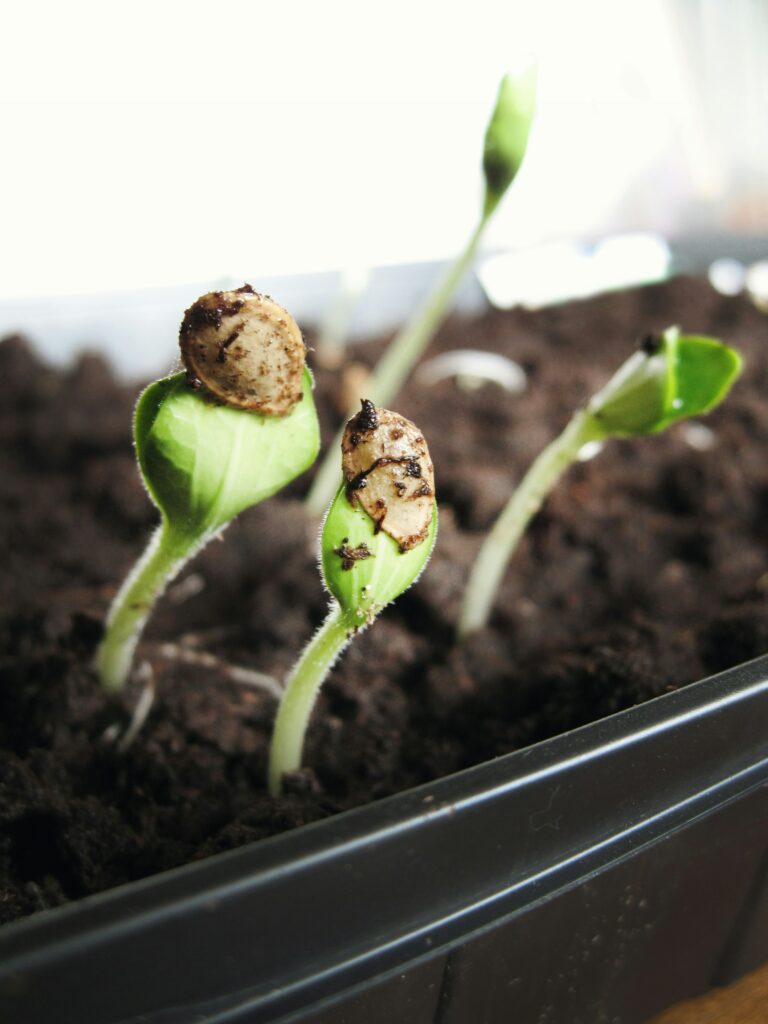
What the Persephone Period Is and How It Works
Gardening often feels to me like a fairy tale world. You plant the tiniest of seeds into the ground, as if by magic, an incredible plant grows from it and blooms in brilliant colors, attracting playful garden friends along the way.
In this whimsical realm of gardening, where the sun kisses the soil and seeds hold the promise of life, there exists a phenomenon known as the Persephone Period. Named after the Greek goddess Persephone, who famously spent a portion of each year in the underworld, this period holds sway over the growth and dormancy of plants, much like Persephone’s annual sojourn affects the changing seasons.
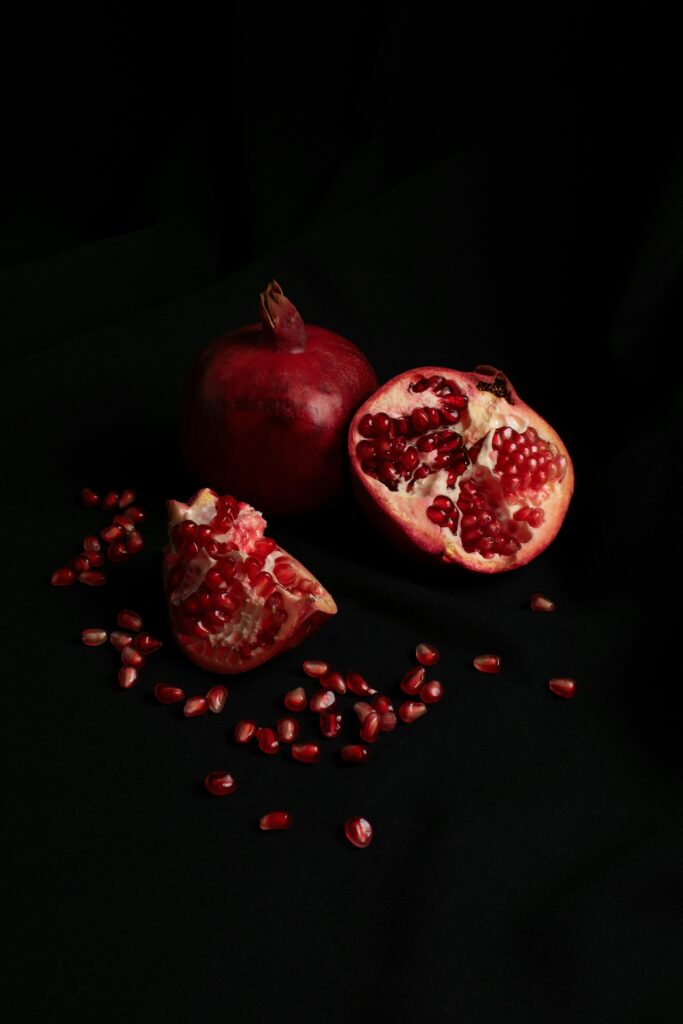
How the Persephone Period Got Its Name
Let’s delve a bit more deeply into the roots of this intriguing term. The Persephone Period finds its etymological origins in Greek mythology. The story involves Persephone, the daughter of Zeus and Demeter (the goddess of agriculture), who was abducted by Zeus’ brother, Hades, the god of the underworld.
In the story, Persephone’s mother, Demeter, was so heartbroken and distraught over the loss of her daughter that she neglected the needs of the earth, which resulted in a widespread famine. No plants could grow because of Demeter’s sadness.
Zeus, seeing her unhappiness, decided to intervene. He went to his brother and asked for Persephone to be returned. As a symbol of the indissolubility of marriage, Hades had given Persephone some pomegranate to eat. He told Zeus that she could only return if she hadn’t eaten any of it. Unfortunately, she had already eaten several seeds. Zeus negotiated a compromise with his brother wherein his daughter would be released for two-thirds of the year, but would spend four months of every year with Hades.
As a result, Persephone would spend a portion of each year in the underworld, during which time Demeter would mourn her daughter’s absence, causing the earth to wither and enter a period of dormancy. This mythological tale serves as an allegory for the seasonal changes witnessed in nature, particularly the transition from growth to dormancy in plants.

What Is the Persephone Period?
I have always enjoyed the ways that mythology helped to explain nature and science with relatable, easy-to-understand stories. Now, though, let’s go a step further and demystify the Persephone Period itself.
In botanical terms, the Persephone Period refers to the duration when daylight dips below 10 hours per day. This decrease in daylight triggers physiological changes in plants, particularly those related to growth and dormancy. When daylight hours diminish, plants perceive this as a signal to prepare for the onset of winter. In response, they undergo a series of biochemical processes that lead to dormancy, a state akin to hibernation where growth slows down or halts altogether.
During this period, plants conserve energy and resources, redirecting their efforts from growth to survival. This strategic slowdown ensures their resilience in the face of harsh environmental conditions, such as frost and limited sunlight. By entering dormancy, plants can withstand the challenges posed by winter and emerge revitalized when conditions become more favorable for growth.
If you want to learn more about photoperiod and how we’ve successfully managed to create a four-season growing process on our farm, you’ll want to read my comprehensive guide to winter vegetable gardening. The Persephone Period plays an important role in the growing process, and once you understand how the pieces fit together, you can fruitfully grow, harvest, and preserve food from your garden all year long.

How the Persephone Period Relates to Plant Growth and Dormancy
So, why does the Persephone Period matter to gardeners? Understanding this phenomenon is crucial for cultivating thriving gardens year-round. By recognizing the onset of the Persephone Period, gardeners can anticipate changes in plant behavior and adjust their gardening practices accordingly.
For instance, knowing when the Persephone Period begins allows gardeners to make informed decisions about planting schedules. It’s wise to avoid sowing seeds or transplanting tender seedlings during this time, as plants will generally struggle to establish themselves in the midst of impending dormancy.
In a recent episode on our YouTube channel, we struggled with this exact issue on our farm last fall. We needed to get all of our transplants into the ground before it was too late. Yet, as is so common for farmers, we were suffering from the effects of a phenomenon known as Optimism Bias. This is when you overestimate the chances that things will turn out well, and it can often contribute to procrastination.

Dispelling the Myth That Gardening Only Happens in Spring and Summer
During and just before the Persephone Period, your work in the garden doesn’t stop. But it certainly does change. In fall, for example, focusing on tasks such as soil preparation, mulching, and winterizing garden beds can yield better results during this period.
Furthermore, awareness of the Persephone Period enables gardeners to optimize their gardening efforts for the changing seasons. For outdoor gardens, this may involve selecting cold-hardy plant varieties that can withstand the rigors of winter or implementing protective measures such as row covers or cold frames to shield delicate crops from frost. I discuss this in great detail in our comprehensive guide to winter gardening.
If you’re specifically interested in four-season production, be sure to also read about the 8 varieties of vegetables that we grow over winter. Knowing how to choose the right plants means that you don’t have to stop growing through the winter.
Indoor gardeners can also benefit from this knowledge by adjusting lighting schedules for houseplants or providing supplemental light to mimic natural daylight hours, ensuring continued growth and vitality throughout the Persephone Period.
In essence, the Persephone Period serves as a gentle reminder from nature to pause, reflect, and adapt our gardening practices in harmony with the rhythms of the seasons. It is not, however, a sign to hang up your gloves and quit for the season. By embracing this cyclical phenomenon with knowledge and reverence, gardeners can nurture their gardens through every phase of growth, from the verdant abundance of spring to the serene dormancy of winter.
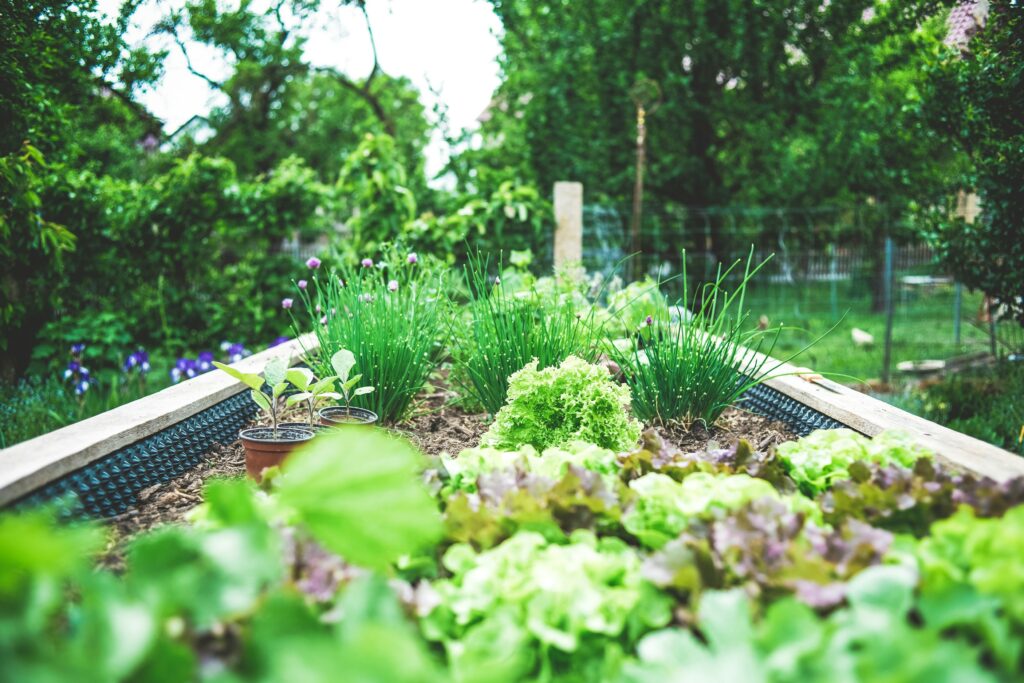
Why Gardeners and Farmers Need to Understand the Persephone Period
But what exactly does the Persephone Period mean for us green-thumbed enthusiasts? Let’s dig in and uncover the details.
Impact on Plant Growth and Development
Picture this: as the days grow shorter and the nights longer, your plants aren’t just lazing about in the garden—they’re actually gearing up for a botanical siesta. The Persephone Period, with its dwindling daylight hours, acts as a gentle nudge for our leafy companions to hit the snooze button on their growth cycle. Think of it as Mother Nature’s way of saying, “Time to slow down, folks.”
During this period of diminished sunlight, many plants enter a state of dormancy, where growth takes a backseat and metabolic activities are dialed down. This dormancy isn’t a sign of neglect or a lack of green thumbs; it’s actually a clever survival strategy employed by plants to conserve energy and ride out the chilly months ahead.
The Persephone Period Triggers Dormancy in Certain Plants
Now, not all plants hit the snooze button at the same time. Some are early birds, sensing the impending darkness and slipping into dormancy before winter even officially arrives. Others are more like night owls, holding out until the bitter cold sets in before calling it quits on the growing season.
Understanding which plants hit the hay early and which ones burn the midnight oil can be invaluable for gardeners. It allows us to tailor our gardening practices to suit the needs of each individual plant, ensuring they get the rest and relaxation they deserve.
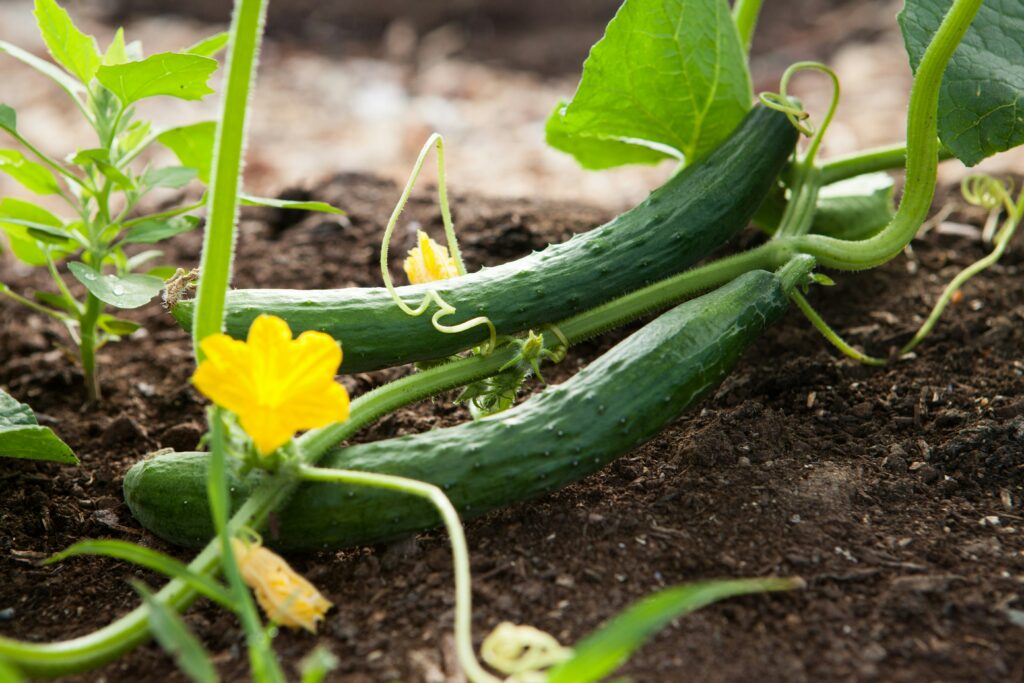
The Persephone Period Impacts Flowering and Fruiting
But wait, there’s more! The Persephone Period isn’t just about hitting pause on plant growth; it also plays a starring role in the magical world of flowering and fruiting. You see, many plants rely on changes in day length to cue their blooming and fruiting cycles.
As the days grow shorter and the Persephone Period descends upon us, certain plants receive the signal that it’s time to shift gears from growing leaves to producing blooms. For these plants, the shorter days act as a trigger, kickstarting the process of flower bud formation and ultimately leading to a spectacular display of blossoms.
Similarly, fruit-bearing plants often take their cue from the changing day length. As the Persephone Period looms large on the horizon, these plants shift their focus from leafy greens to plump, juicy fruits. It’s all part of nature’s grand plan to ensure a bountiful harvest come summertime.
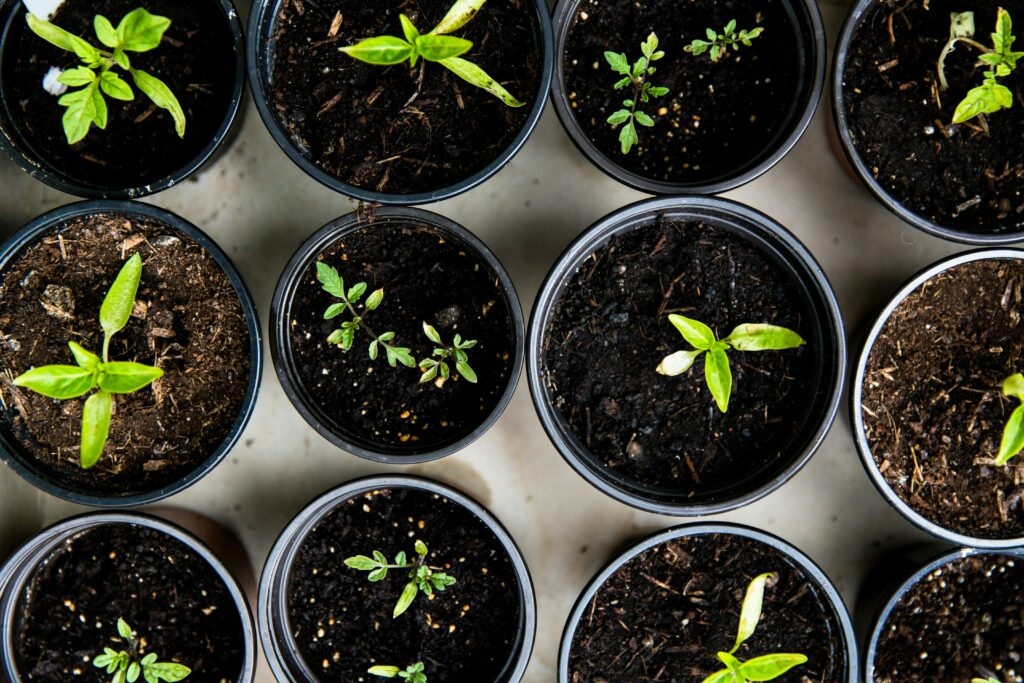
Implications to Growing Practices
Now that we’ve peeled back the petals and uncovered the mysteries of the Persephone Period, let’s talk turkey (or, since I’m vegan, should I say, turnips?) about what this means for us as growers.
Adjustments to Planting Schedules
First things first, knowing when the Persephone Period hits town can be a game-changer when it comes to planning your planting schedule. Instead of blindly sowing seeds and transplanting seedlings willy-nilly, savvy gardeners can use this knowledge to their advantage.
By timing your planting activities to coincide with the onset of the Persephone Period, you can ensure that your plants have ample time to establish themselves before the chilly embrace of winter sets in. This strategic approach can mean the difference between a garden bursting with life come spring and a barren wasteland of wilted dreams.
The Persephone Period’s timing is dependent upon where you’re located in relation to Earth’s latitudes. For our Northern latitude here in Snohomish, WA, this happens between (approximately) November 1st and February 10th. However, if you live in Atlanta, GA, your Persephone Period is much shorter, lasting between December 8th to January 4th.
You can figure out the Persephone Period for your location with the help of an almanac. You’ll simply need to determine when you have less than 10 hours of daylight.
Then, you will need to count backwards from this time to determine when to start your seeds for any plants you hope to overwinter in your garden. To help you keep track, I’ve created a printable Garden Planner with plenty of worksheets to support your growing practices.
Ready to dig in and grow something beautiful?
Get my Free Garden journal
Let’s be gardening buddies! Sign up to join our community, and get your free printable PDF Garden Journal. This is so good!
Considerations for Cold-Hardy Crops
Next, let’s talk about the unsung heroes of the garden: cold-hardy crops. While other plants may be getting very, very sleepy during the Persephone Period, these hardy specimens are just getting warmed up (figuratively speaking, of course).
Cold-hardy crops, such as kale, spinach, and Brussels sprouts, are the true MVPs of the winter garden. Not only do they shrug off the chill like it’s no big deal, but they actually thrive in the cooler temperatures of the Persephone Period.
Some crops will give their very best flavors when grown in the cold of winter, too. Carrots and beets, for example, will be their sweetest when grown in cold conditions.
Although temperature and the Persephone Period aren’t the same thing, they typically do coincide. Understanding how they both work together will help you grow better tasting vegetables, as well as improve your yields.
For gardeners looking to maximize their winter harvest, cold-hardy crops are definitely where it’s at. By planting these resilient specimens at the right time and providing them with a little extra TLC, you can enjoy a steady supply of fresh greens straight from the garden all winter long.
Our top 8 vegetables to grow in winter are all staples on our farm, and for the purposes of preserving our harvests to last all year. Growing through all four seasons maximizes our bed space, as well. We grow cold-hardy crops in the winter, and tender crops in the fairer months, allowing us to grow significantly more food per year in the same amount of space.
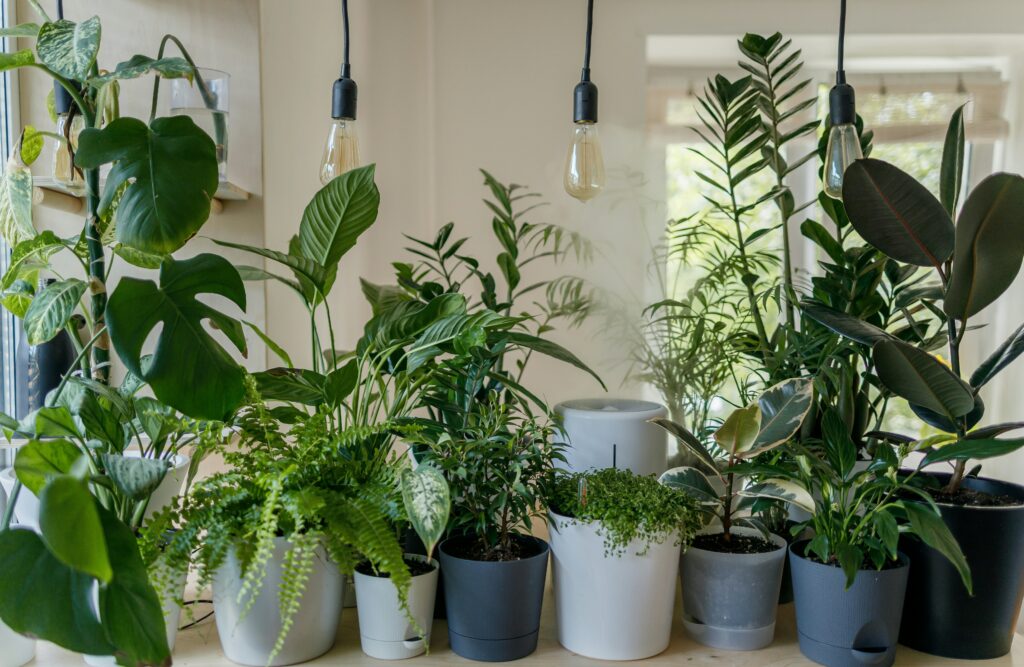
Management of Light Exposure for Indoor Plants
But what about our indoor plant pals? Don’t worry, they haven’t been forgotten in the grand scheme of things. In fact, the Persephone Period holds just as much sway over our indoor greenery as it does over the outdoor garden.
For indoor plants, the dwindling daylight hours of the Persephone Period can spell trouble if not properly managed. Without access to natural sunlight, our indoor plants may start to feel the effects of seasonal depression (yes, plants can get the blues too!).
To combat the winter doldrums, consider providing supplemental lighting for your indoor plants during the Persephone Period. LED grow lights are a popular choice among indoor gardeners, as they provide a full spectrum of light that mimics the sun’s rays without the heat and energy consumption of traditional incandescent bulbs.
You absolutely do not need to by super expensive lights with multiple funky colors. These are the lights we use exclusively on our farm, and they are fantastic. Every seedling on our farm begins its life under these lights, and they are quite affordable.
By ensuring that your indoor plants get the light they need, you can help them weather the dark days of winter with ease and emerge victorious when spring finally rolls around.
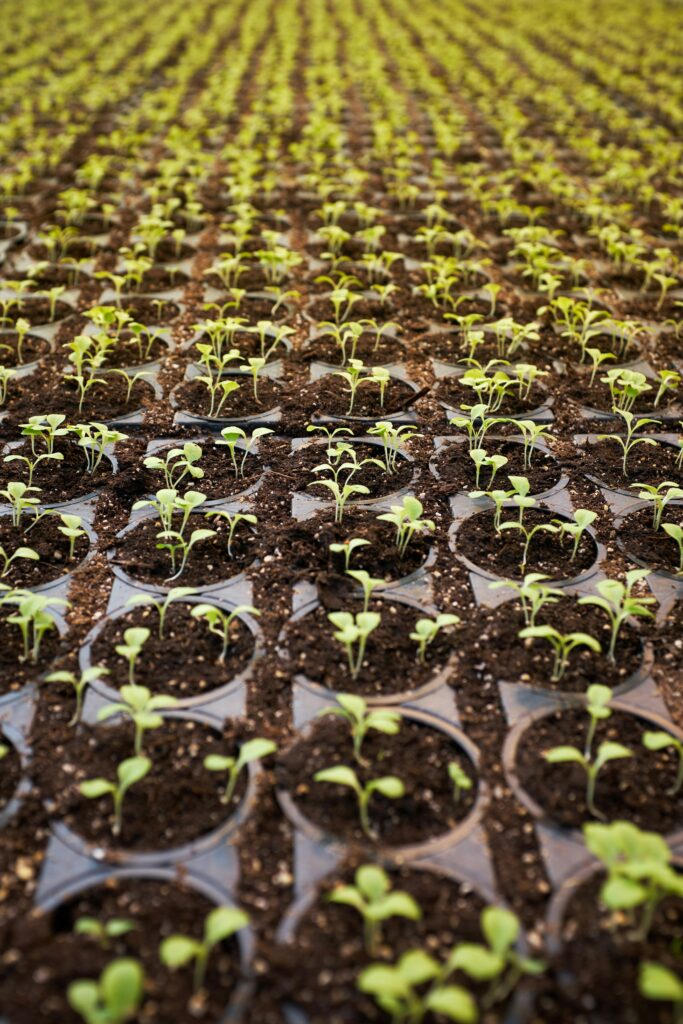
Strategies for Growing During the Persephone Period
While the days may be short and the nights long, there are plenty of strategies we can employ to keep our green companions happy and healthy during this chilly season. So grab your gardening gloves and let’s dive into some Persephone Period pointers!
Selecting Appropriate Plant Varieties
First things first, let’s talk plant selection. When it comes to gardening during the Persephone Period, choosing the right plant varieties can make all the difference. Instead of fighting against nature, why not embrace it?
Opt for cold-hardy plant varieties that are well-suited to the rigors of winter. Think leafy greens like kale, spinach, and Swiss chard, or root vegetables like carrots, turnips, and parsnips. These resilient specimens are built to withstand the chilly temperatures and diminished daylight of the Persephone Period, ensuring a bountiful harvest even when the world outside seems to be hibernating.
Each year, we reliably grow 8 varieties of winter vegetables. We have three more varieties that we believe will also do well, and we plan to add them in the coming year. Read about all of them here.
By selecting appropriate plant varieties that are well-adapted to the winter conditions, you can set yourself up for gardening success even in the darkest days of the year.
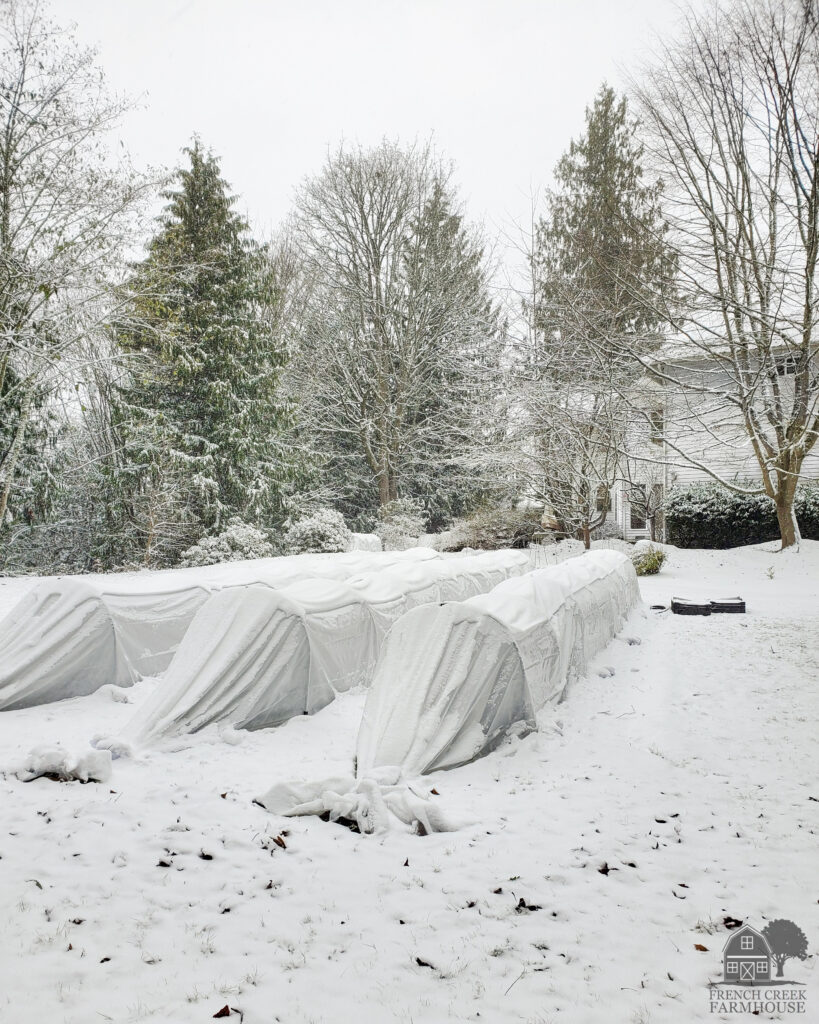
Protecting Outdoor Crops
Now, let’s turn our attention to the great outdoors. While some plants may be perfectly content to hunker down and weather the winter chill on their own, others may need a little extra protection to make it through the Persephone Period unscathed.
For outdoor crops, implementing protective measures such as row covers, cold frames, or mulching can help shield delicate plants from the harsh winter elements. Row covers provide an extra layer of insulation against frost and cold winds, while cold frames create a mini greenhouse environment that traps heat and keeps plants cozy.
Mulching, on the other hand, helps insulate the soil and regulate temperature fluctuations, providing a cozy blanket of protection for plant roots. Whether you opt for row covers, cold frames, or mulching (or a combination of all three), implementing protective measures for your outdoor crops can help ensure a successful winter harvest.
In our comprehensive guide to winter gardening, we discuss these techniques in much more detail, as well as how we grow on our farm through all four seasons.

Supplemental Lighting
We’ve already discussed supplemental lighting for indoor plants, but what about giving more light to your overwintered plants. Is it a good idea? Is it even necessary?
The answer is a little tricky.
For most plants, the Persephone Period serves a useful purpose, and so allowing them to go dormant is best. But let’s say you want to grow flowers to sell early in the season before they would otherwise be available. This is called “forcing”, and it happens when you trick the plant into believing it’s a different time of year than it really is.
In this case, you would absolutely need to provide supplemental lighting (and maybe heat, too) to get your plants to behave as though they are in a different season. This can get costly, so you’ll need to weigh the pros and cons of gardening with this method.
If you have a hoop house, greenhouse, or indoor vertical garden, you can certainly create a setup to accomplish these goals. You’ll just want to consider the cost of not only the infrastructure to create such an environment, but also the cost to power it.
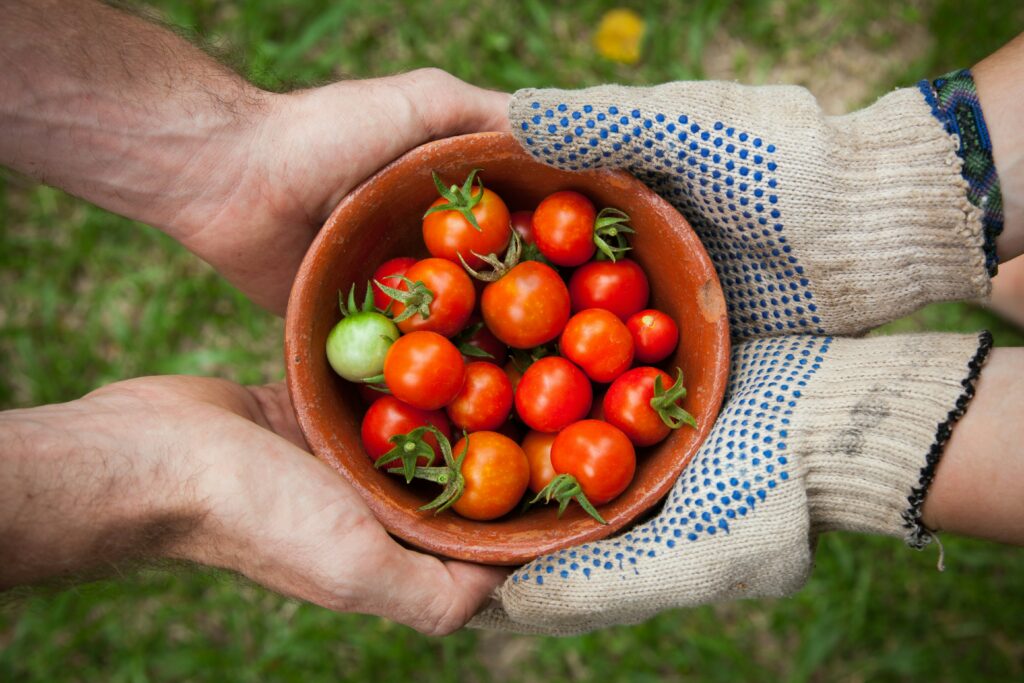
What Expert Growers Know: Maximizing Productivity and Plant Health
So there you have it—the lowdown on the Persephone Period and why it matters to gardeners. From triggering dormancy in certain plants to influencing flowering and fruiting cycles, this incredible phenomenon plays a pivotal role in the ebb and flow of the garden year.
By understanding the implications of the Persephone Period for our beloved green companions and adjusting our gardening practices accordingly, we can ensure that our gardens thrive year-round. So here’s to embracing the rhythms of the seasons, listening to the whispers of Mother Nature, and nurturing our gardens with love and care, Persephone Period and all.

Ready to dig in and grow something beautiful?
Get my Free Garden journal
Let’s be gardening buddies! Sign up to join our community, and get your free printable PDF Garden Journal. This is so good!

